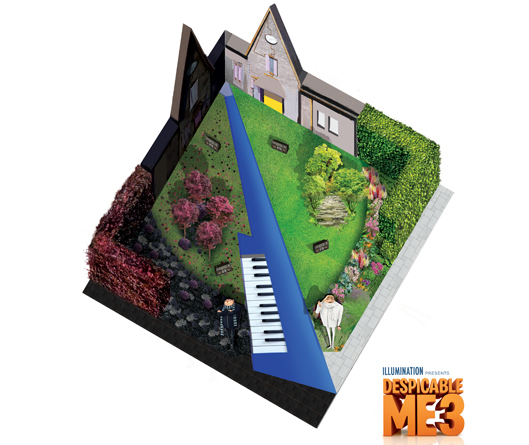
Designing Gardens on Slopes
By Elizabeth Davies and Ruth Chivers
Price £25 sterling – discount for GLDA members and students when ordered from the publisher (Please contact the GLDA office)
Not many gardens are flat. Just one step makes a big difference, adding a new feature and extra interest to the site. I’ve always had a fondness for split levels, having grown up in a garden with a little slope you could roll down as a squealing toddler and up the road from Bushy Park in Templeogue, which has a huge one that left you reeling with dizziness! But when it comes to incorporating them into garden designs, slopes present a real challenge and can add big-time to your client’s budget. So if you’re going to tackle one (build on one, that is, as opposed to roll down it), best to nail it.
With that in mind, this – the latest in Packard’s ‘Workshops on Garden Design’ series – is a veritable gem of a book. A really comprehensive and useful step-by-step guide (no pun intended) that shows how good design can avoid common and costly mistakes when dealing with a bumpy topography.
Aimed primarily at students of garden and landscape design, the two authors are well-equipped to deal with their subject, both having come to garden design later in life. As someone who also went back to college as a mature student, ‘Designing Gardens on Slopes’ provides the two things that I feel are really necessary when teaching a subject that combines art and science: it has lots of excellent illustrations and visuals and it deals in depth with the nitty-gritty of the practical, construction side. After all, there’s no point in designing something that looks lovely on paper, but is impossible to build in reality, and levels and slopes have to be one of the trickiest elements to get your head around when you’re starting off in two dimensions.
So grab a copy of this guide, which effectively and logically steers the reader through from the survey stage to the design; from the construction to the planting. It includes good summaries at the end of each section and helps you get to grips with the terminology of datum points, treads and risers, and more. Experts and teachers alike will get something from this book – as a useful aid in communicating a complicated topic to a class, client or contractor, but also as a handy reference in a country, where so many gardens are situated on a slope.
One of the other elements I particularly liked was how the authors dealt with plants. There’s always a risk with a technical garden design book: that of losing sight of the fact that a garden includes living things – the plants. Here, the authors not only talk about soil types and good plants for slopes, they also give advice on how to cope with mature trees so that they are not damaged in the process of incorporating them into a new design. An issue, I for one, believe cannot be stressed enough.
Reviewed by Laura O’Mahony
Source: GLDA – Designing Gardens on Slopes – A Book Review by Laura O’Mahony





